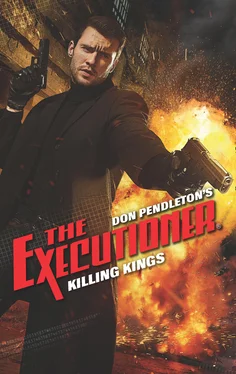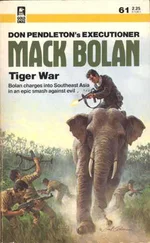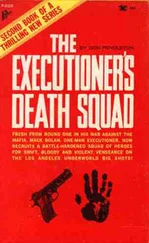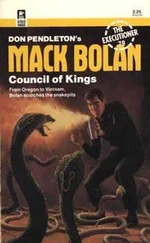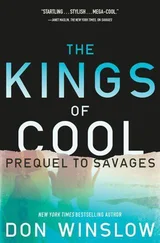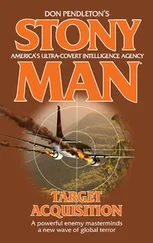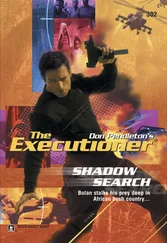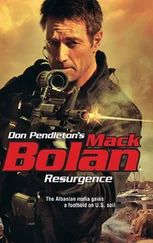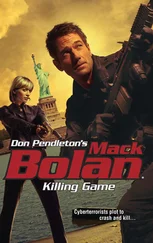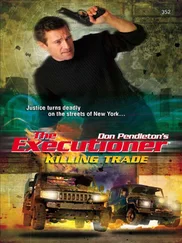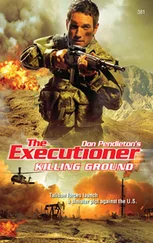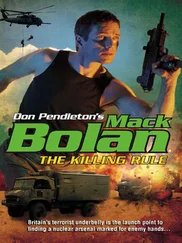Now a jet-black Hummer limousine was pulling up outside the club. Well-dressed men and their women spilled from open doors like clowns emerging from a circus car, except in luxury, with more than ample room for anything they cared to do while rolling through the streets of Medellín. Barón lifted his cell phone, hanging back in the shadows as he snapped away, until he glimpsed a face he hadn’t seen in years and had to stop. He lowered his phone while he gaped, amazed.
It was impossible...and yet, how could he not believe the evidence of his own eyes?
He rushed another string of photos— click, click, click —then speed-dialed his contact and fidgeted through half a dozen distant rings before a sleepy voice answered.
“It’s me,” Barón began. “No, I don’t know what time it is, and you won’t care when you hear this. He’s back! There’s no mistaking it. Pablo! What do you mean, which Pablo? Was there ever more than one, gringo? I’m saying it is Pablo Escobar, El Rey de la Cocaína.”
The harsh voice scolded him, bringing a rush of heat to Barón’s cheeks. “Listen to me,” he answered back. “I haven’t snorted anything, okay? I’m not drunk, and I’m not crazy. It’s him! I don’t care if you say he’s dead. I’m telling you, he’s back!”
Chapter One
Val Verde County, Texas
“Man, I wish they’d show, already,” Jack Grimaldi said. “I’m sweating like a pig, here. Must’ve lost five pounds already.”
“I’ll bet it looks good on you,” Mack Bolan, aka the Executioner, answered him.
They lay on sandy ground they’d scooped out with entrenching tools, before daybreak, under a staked-out tarp in desert camouflage, spruced up with dry mesquite pasted on top of it. The pattern of the loose fatigues they had been sweating through since dawn matched the tarpaulin, save for their tactical boots and web gear, both desert tan.
The warriors had come armed for bear—or, rather, armed for men who didn’t care who they gunned down or caught and tortured for whatever useful information they possessed. Each man lay stretched out beside a Steyr AUG bullpup assault rifle, selective fire, translucent magazines loaded with thirty rounds apiece of 5.56 mm NATO rounds. Each Steyer came equipped with a Swarovski 1.5x telescopic sight, integrated with the receiver casting. Its black ring reticle and basic range finder had been designed so that a person who was five feet eleven inches tall filled the scope at 300 meters downrange.
Aside from rifles, both watchers wore sidearms on their hips. Bolan’s semiauto Desert Eagle Mark VII pistol was chambered in .44 Magnum and fired nine rounds. Grimaldi had gone lighter, with a Glock 22 in .40-caliber Smith & Wesson, fifteen rounds in the magazine and one up the spout.
Their other armaments included extra magazines in Velcro pouches, M68 fragmentation grenades fitted with impact fuses, and their combat knives were Cols Steel GI Tantos with seven-inch fixed blades in a black, rust-resistant finish.
They were dressed to kill, and that was just precisely what they had in mind.
Now all they had to do was wait, and that was getting old.
* * *
The trail that had brought Bolan and Grimaldi to their present station in the desert had begun 1,750 miles away, to the northeast, at Arlington National Cemetery. One day earlier, amid the simple markers and some larger monuments to heroes, Bolan had been following procedure when he met with Hal Brognola, chief among his oldest living friends, once a street agent for the FBI, promoted through the ranks over time to a top-level but ill-defined post in the Justice Department that allowed him the freedom to take on various roles within the department.
The big Fed was a man known to have the President’s ear on matters of national security. Brognola, unknown to most government officials, was also the director of the Sensitive Operations Group, a clandestine organization whose covert headquarters was based at Stony Man Farm, semiconcealed within the Blue Ridge Mountains of Virginia. From there, assignments were issued for its warriors—Mack Bolan, if the assignment aligned with his personal goals, plus the strike forces dubbed Able Team and Phoenix Force—who would take on terrorists and criminal cartels worldwide. Their missions were, in essence, to search and destroy. Targets assigned were generally not expected to stand trial.
When Brognola needed to speak with Bolan—long presumed dead by the public that had previously followed his extended one-man war against the Mafia, now with his records thoroughly expunged—Bolan sometimes dropped by the Farm, more often meeting casually in some venue such as Arlington, where getting lost among tourists came easily.
This time around, the big Fed had delivered some alarming news. That in itself was not unusual; he called on Bolan only when the stakes were high and time was short. The first part of Brognola’s message—that cocaine shipments to the United States from Mexico and South America had multiplied of late, the loads increased in volume—wasn’t any real surprise. Drug traffickers went through repeated boom-and-bust cycles, the same as any other multibillion-dollar industry, affected by such factors as the weather in their crop-producing regions, police activity at home or on transshipment routes and interference by competitors who hijacked shipments, slaughtering their crews.
But then Brognola dropped the bomb.
A valued DEA informant working out of Medellín, Colombia, swore that he’d seen a ghost—and not just any ghost, at that. The specter he’d reported, having passed two polygraph exams that proved him truthful and sober, belonged to Pablo Emilio Escobar Gaviria, a founder of the one-time Medellín Cartel, who’d introduced a new term to authorities around the planet: narcoterrorism , meaning the assassination of police, public officials, journalists—and once, twelve judges of Colombia’s Supreme Court, slain with eighty-six more persons during a guerrilla raid against Bogotá’s Palace of Justice.
The rub: by all accounts, Escobar was dead. And not just rumored to be dead, but shot to pieces by Colombian soldiers and DEA agents in December 1993, while fleeing from arrest in Los Olivos, one of Medellín’s middle-class barrios. According to the autopsy report, the drug lord had suffered wounds to his torso and legs, before a final gunshot drilled him through one ear.
There was no question of surviving what amounted to a point-blank execution. Photos of his corpse in situ, dripping blood and ringed by grinning slayers, had been broadcasted globally and still surfaced each year, around the anniversary of his passing. A painting by Colombian artist Fernando Botero showed Escobar writhing under a storm of bullets, gun in hand. At least eight books, which were penned by relatives, police and journalists, detailed the life and death of Colombia’s “King of Cocaine.” More recently there’d even been a TV series titled Narcos , running for three seasons that encompassed Escobar’s reign, his death and the succession of his Cali Cartel rivals to short-lived supremacy.
So he was dead, okay? And yet, if the DEA’s man on the street could be believed, together with his polygraph results, Escobar had not only returned, but also didn’t look as if he’d aged a day since drowning in his own blood on a Medellín rooftop.
Bolan and Brognola had talked about potential explanations. Escobar had two brothers but no twin, and if there had been a twin nobody noticed during eighteen years of international publicity, surveillance and even public interviews, said sibling would’ve aged since Escobar died, pushing age seventy by now.
Another thought: the lion’s share of Latin narcotrafficantes worshipped one or more orishas —deities of sects including Santeria, Palo Mayombe and plan, old-fashioned Voodoo, thought to safeguard criminals and bless their enterprises. Fine, but neither Bolan nor Brognola harbored a belief in zombies rising from their graves to walk abroad.
Читать дальше
